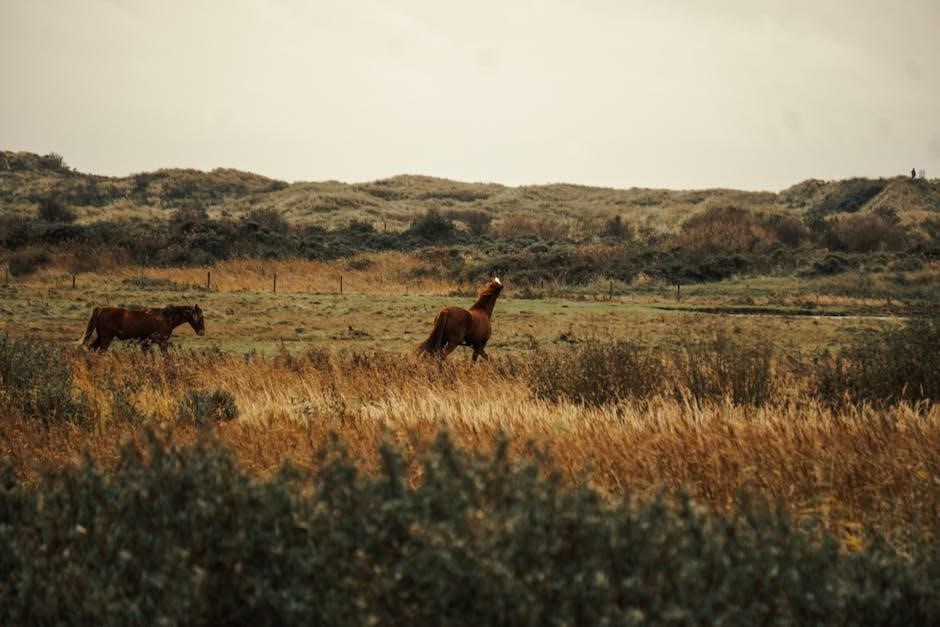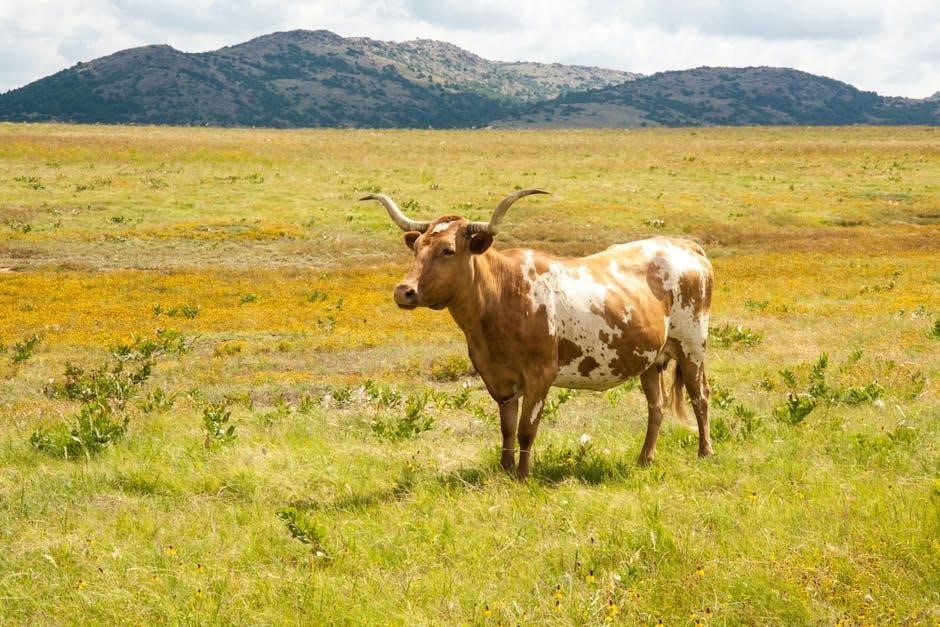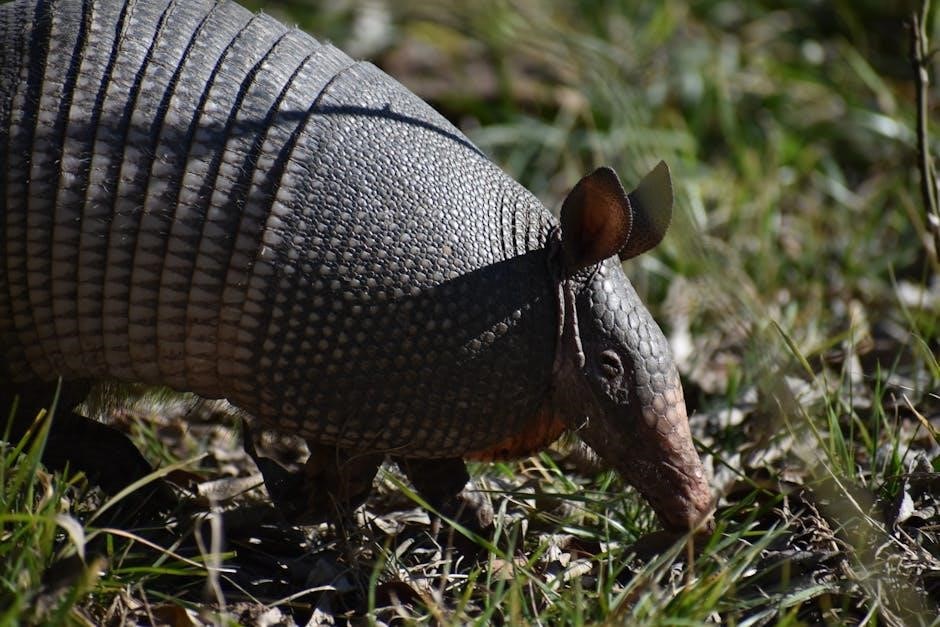Texas snakes are diverse, with many species, and a field guide helps identify them, using
- images and descriptions
to educate people about these fascinating creatures naturally․
Overview of Snake Species in Texas
A comprehensive field guide to Texas snakes provides an overview of the various species found in the state, including their characteristics, habits, and habitats․ The guide typically includes a list of species, ranging from venomous snakes like copperheads and rattlesnakes to non-venomous species like garter snakes and king snakes; According to the guide, Texas is home to a diverse range of snake species, with different species found in different regions of the state․ The guide also includes information on the conservation status of each species, as well as tips for identifying and avoiding snakes in the wild․ By providing a thorough overview of the snake species found in Texas, the field guide is an essential resource for anyone interested in learning more about these fascinating creatures․ The guide is written by experts in the field and is based on the latest research and data․

Types of Venomous Snakes in Texas
Venomous snakes in Texas include copperheads, cottonmouths, and rattlesnakes, found throughout the state naturally in various habitats and regions always․
Copperheads, Cottonmouths, Rattlesnakes, and Coral Snakes
A field guide to Texas snakes provides information on venomous species, including copperheads, cottonmouths, rattlesnakes, and coral snakes, with details on their habitats and characteristics․
These snakes are found in various regions of Texas, with copperheads and cottonmouths commonly found in eastern Texas, while rattlesnakes are found throughout the state․
Coral snakes are less common, but can be found in southern Texas, and are known for their distinctive coloring and venom․
A field guide can help identify these species, and provide information on how to avoid their habitats and prevent encounters․
With the right knowledge and precautions, it is possible to coexist with these venomous snakes, and appreciate their role in the Texas ecosystem․
By understanding the different species of venomous snakes in Texas, people can better navigate the outdoors and stay safe․
Field Guide to Texas Snakes
A comprehensive guide provides
- images
and descriptions to identify Texas snakes accurately always using detailed information․
Features of a Comprehensive Field Guide
A comprehensive field guide to Texas snakes includes detailed descriptions, range maps, and full-color photos to help identify species accurately․ The guide features information on snake habitats, behaviors, and characteristics, making it a valuable resource for herpetologists and enthusiasts alike․ With a comprehensive field guide, users can learn about the diverse species of snakes found in Texas, including their unique features and habits․ The guide typically includes a list of species, along with their corresponding descriptions, range maps, and photos, allowing users to quickly and easily identify the snakes they encounter․ By including these features, a comprehensive field guide provides a thorough understanding of Texas snakes, making it an essential tool for anyone interested in these fascinating creatures․ The guide’s detailed information and high-quality images make it a must-have for anyone looking to learn more about Texas snakes․

Habitat and Distribution of Texas Snakes
Texas snakes inhabit various ecosystems, including deserts, forests, and grasslands, with different species found in each region naturally occurring there always․
Regional Variations in Snake Populations
Regional variations in snake populations are observed in Texas, with different species dominating various areas, influenced by factors like climate and geography, which affect their distribution and abundance․
The eastern part of Texas has a higher concentration of certain species, while the western part is home to others, and the southern region has its unique set of species, as shown in the field guide․
A comprehensive field guide to Texas snakes provides detailed information on the regional variations in snake populations, including their habitats, behaviors, and characteristics, enabling readers to better understand and identify the different species found in each region of Texas, and to appreciate the diversity of snake populations in the state․
This knowledge is essential for snake enthusiasts, researchers, and conservationists, and is made available through the field guide, which is a valuable resource for anyone interested in Texas snakes․

Behavior and Diet of Texas Snakes
Snakes in Texas exhibit unique behaviors and diets, including hunting and feeding habits, as described in the field guide using various
- techniques
and observations naturally․
Prey and Predators of Indigo Snakes and Other Species
Indigo snakes in Texas have a diverse diet, consisting of various prey, including rodents, birds, and other snakes, as discussed in the field guide, which provides detailed information on their feeding habits and behaviors․ The field guide also explores the predators of indigo snakes, such as hawks, owls, and other larger snakes, highlighting the complex relationships within the ecosystem․ Additionally, the guide examines the unique characteristics of indigo snakes, including their ability to consume rattlesnakes, and discusses the importance of understanding these interactions to appreciate the role of indigo snakes in maintaining the balance of their environment․ By studying the prey and predators of indigo snakes, readers can gain a deeper understanding of the intricate web of life in Texas ecosystems, as presented in the comprehensive field guide․ The guide is essential for anyone interested in Texas snakes․

Conservation and Ecosystem Impact
Snakes play a crucial role in maintaining ecosystem balance, and conservation efforts are necessary to protect them, as outlined in the field guide, using
- facts
naturally․
The Role of Snakes in Maintaining Ecosystem Balance
The role of snakes in maintaining ecosystem balance is crucial, as they help to regulate the population of small mammals and other animals, using their natural instincts to hunt and kill their prey, which in turn helps to maintain the balance of the ecosystem, and this is explained in the field guide, with information on the different species of snakes and their habits, including their diet and habitat, and how they interact with their environment, and the importance of conservation efforts to protect these animals and their habitats, and the impact that humans can have on the ecosystem, and the need to educate people about the importance of snakes in the ecosystem, and the role they play in maintaining the balance of nature, and the field guide provides this information in a clear and concise manner․
